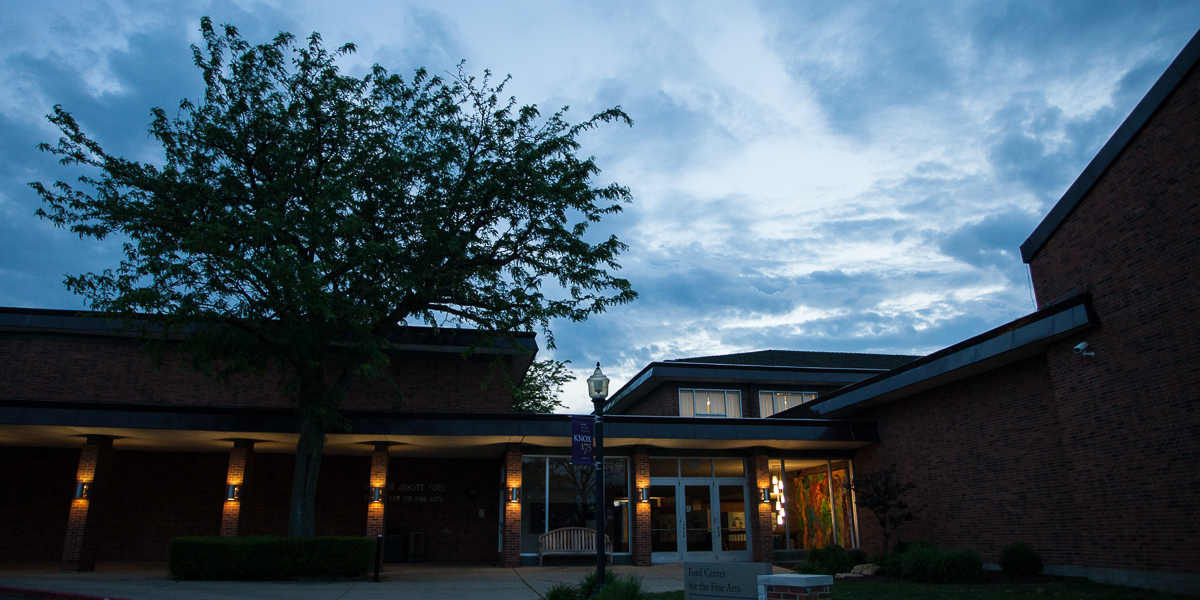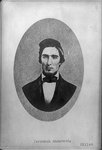

Venture Boldly

Adriana Colindres
Features Editor
2 East South Street
Galesburg, IL 61401

While doing research a few months back, Galesburg historian Tom Wilson came across documents referring to abolitionist John Brown and the pre-Civil War raid on Harpers Ferry, Virginia, that Brown spearheaded 150 years ago.
An unexpected reference to Knox College caught Wilson's eye, so he dug further, learning that Brown's top adviser had a connection to Knox.
 The adviser, Iowa native Jeremiah Goldsmith Anderson, had made his way to Galesburg and graduated in 1852 from the Knox Academy, which was Knox College's preparatory school.
The adviser, Iowa native Jeremiah Goldsmith Anderson, had made his way to Galesburg and graduated in 1852 from the Knox Academy, which was Knox College's preparatory school.
"It really was the equivalent of what a community college would do today," Wilson said in a recent presentation to the Civil War Discussion Group in Galesburg.
After finishing at the Academy, Anderson left Galesburg and embarked on an adventure-filled life.
"He was a peddler, a farmer, worked in sawmills across the country, and was arrested a countless number of times," Wilson said, pointing out that Anderson's problems with the law stemmed from his stance against slavery.
"When he was interviewed from time to time, he gave credit to good old Knox College in Galesburg, Illinois, for inspiring his anti-slavery beliefs," Wilson said.
Knox College, still a relatively new institution, already had a long track record against slavery. George Washington Gale and the other founders of the college were abolitionists, and Gale once faced indictment for harboring fugitive slaves. At least one college trustee, Samuel Wright, actively participated in the Underground Railroad by helping slaves escape to freedom.
When Anderson encountered Brown, a fellow abolitionist, they quickly struck up a friendship.
Brown "liked Jeremiah and took him under his wing," Wilson said. Anderson became Brown's "right-hand person," and they made raids all over the country.
Attack on Harpers Ferry
In mid-1859, Brown decided he and his band of raiders would target the military arsenal at Harpers Ferry, where the Shenandoah and Potomac rivers converge. The plan was to steal weapons from the arsenal and distribute them to slaves so they'd be equipped to fight for their own freedom.
The raiders succeeded -- albeit just for a short time. Brown's goal was thwarted when the federal government sent Col. Robert E. Lee to quell the uprising. Lee later would lead Confederate troops in the Civil War.
The troops that Lee led at Harpers Ferry put down the revolt and captured Brown, who was put on trial and hanged. The 26-year-old Anderson died in battle after being stabbed by a bayonet.
Anderson originally was buried in a pauper's grave, but his remains later were moved to be near Brown's burial site in New York, Wilson said.
The Harpers Ferry raid continues to resonate with historians, even after the passage of 150 years.
Wilson said that while some believe Harpers Ferry "was the most childish, ill-conceived raid in the history of the United States," others think it served the purpose that Brown intended.
Historians view the raid as significant because it brought the United States closer to the Civil War that would break out in 1861.
Knox and World War II
In another portion of his presentation to the Civil War Discussion Group, Wilson described how World War II affected Knox College and the surrounding community.
He said Knox College's president, Carter Davidson, realized that most men would be serving in the military, rather than attending college. Davidson came up with an idea.
"He was able to persuade the government that it would be nice to do some training in Galesburg of some of these people who eventually were going to go off to war," Wilson said.
Army pilots received training at Galesburg's airport, and they took classes at Knox College. They also needed places to live, so many of them moved into the fraternity and sorority houses on campus.
After the war ended, Wilson said, many military veterans enrolled as Knox students and played on the college's athletic teams.
Wilson, a lifelong Galesburg resident, writes about local history and often focuses on Knox College. His newspaper column runs three times a week in The (Galesburg) Register-Mail, and many of those columns appear in his book, Remembering Galesburg.
The Civil War Discussion Group meets regularly to examine that conflict and other historical events.
Founded in 1837, Knox is a national liberal arts college in Galesburg, Illinois, with students from 45 states and 44 nations. Knox's "Old Main" is a National Historic Landmark and the only building remaining from the 1858 Lincoln-Douglas debates.
Published on March 24, 2010